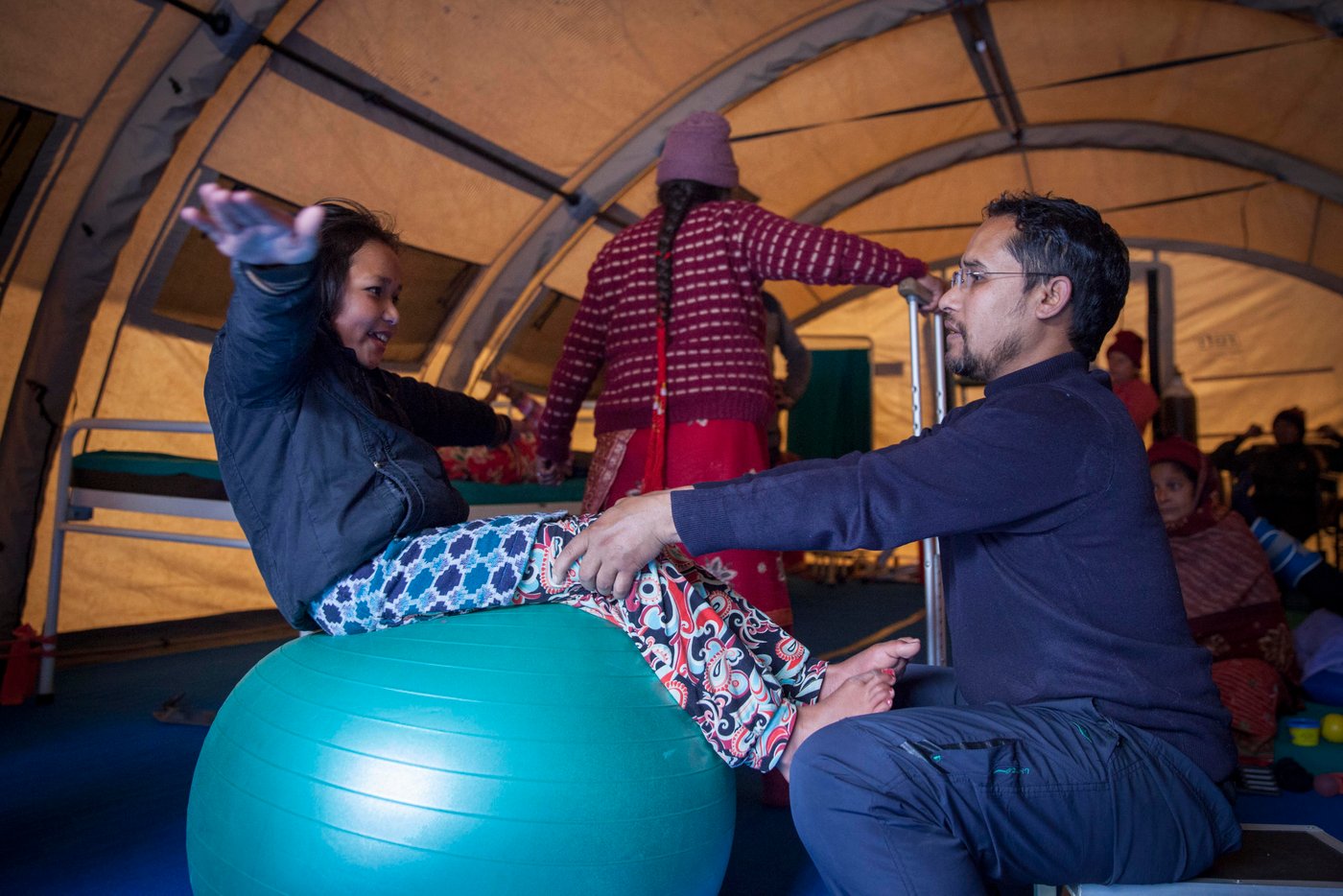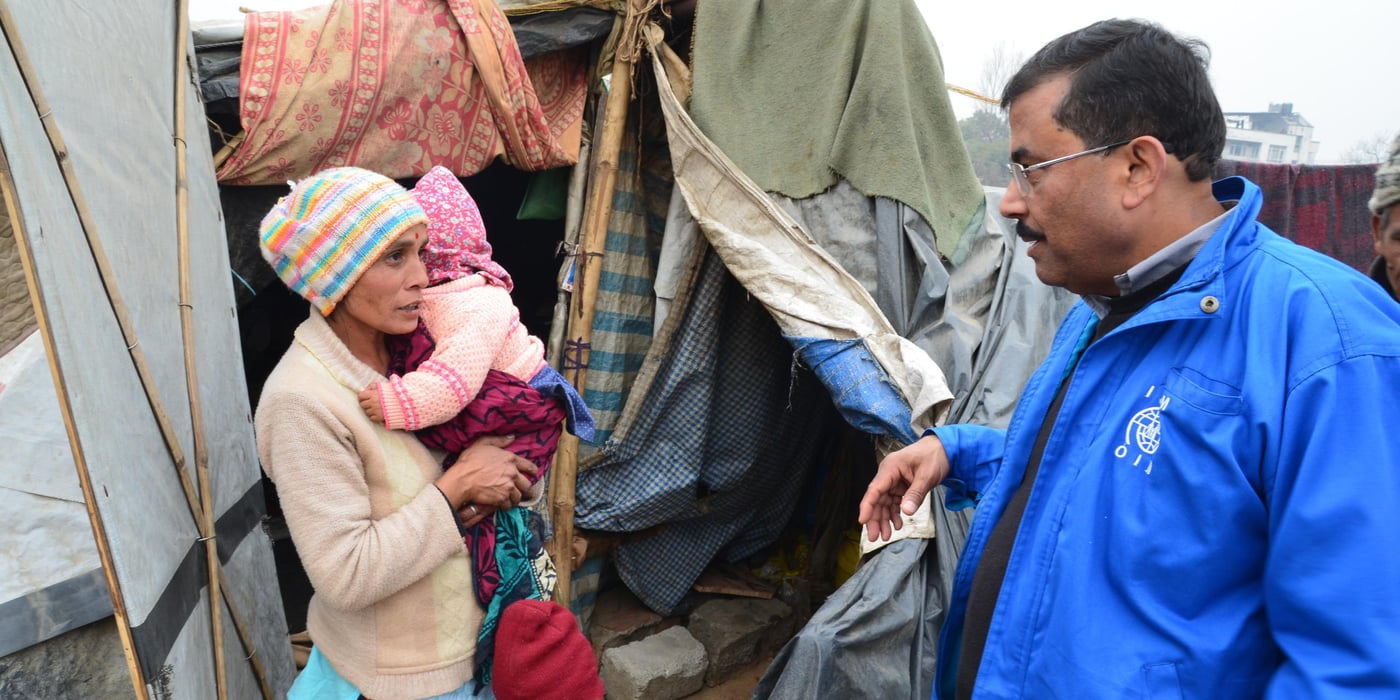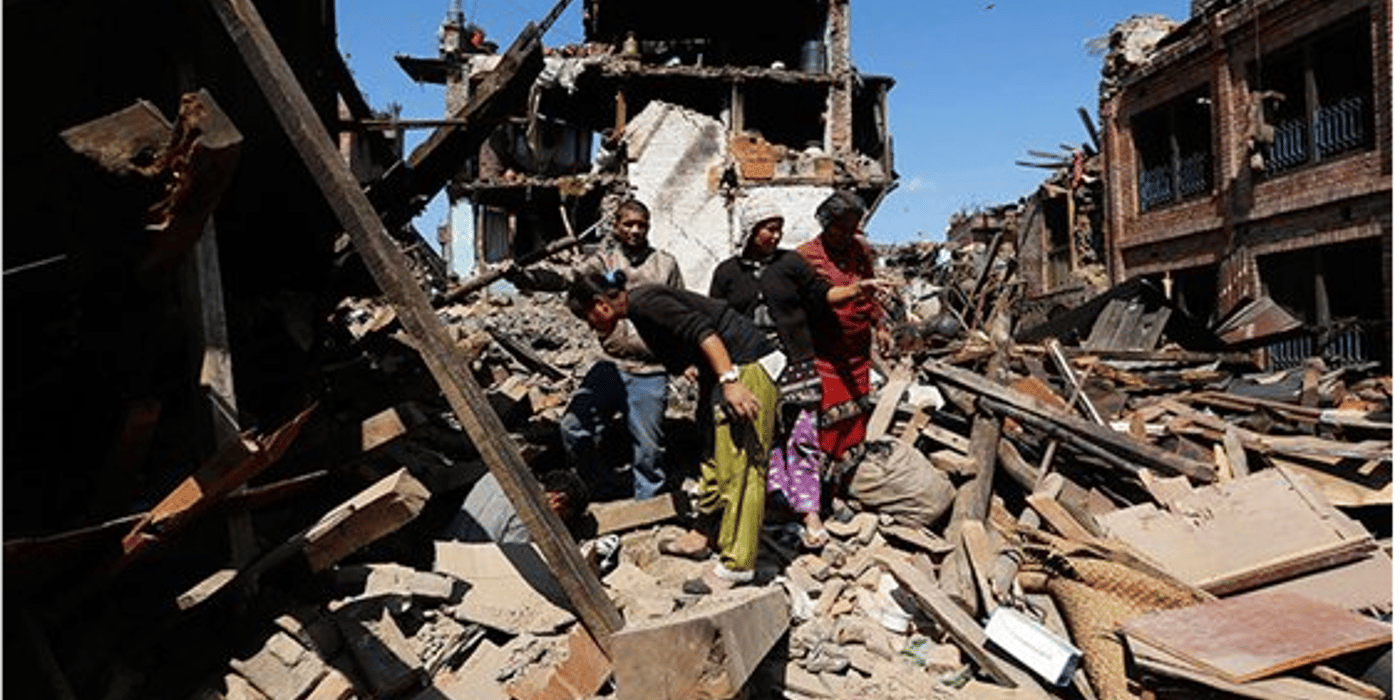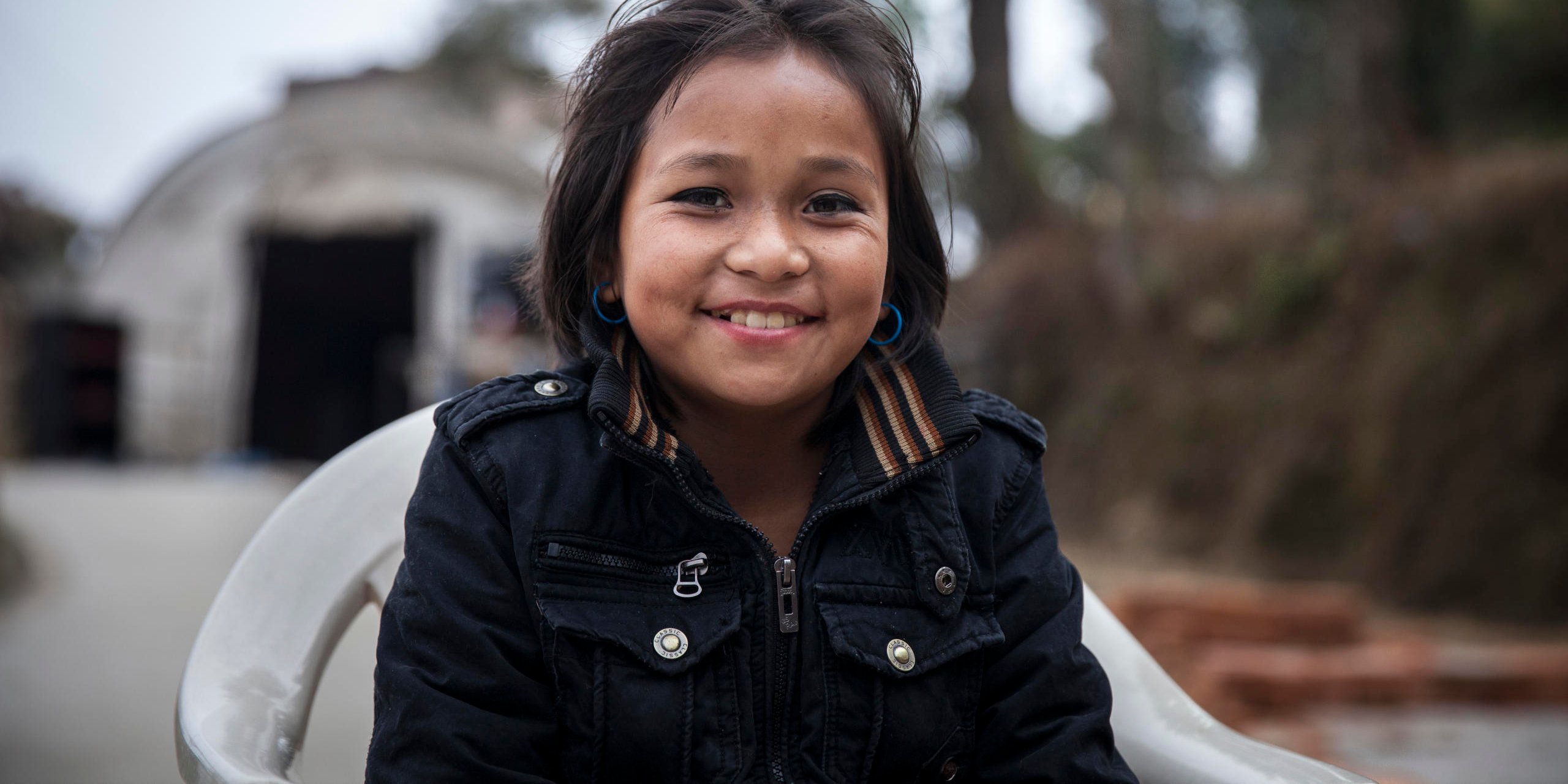
The tent in the Injury Rehabilitation Unit in Chautara is full of young and old patients working silently and focused on their exercises while local physiotherapists guide them and monitor their progress. The centre was established with the help of several NORCAP deployees and is currently the only place in Nepal to offer these services.
"Most of those who come here need extensive physiotherapy in the beginning, but when they start to get better, we target the exercises so that they resemble the tasks they will be faced with at home in order to make them as prepared as possible", explains the Injury Rehabilitation Unit's focal point, Ashika Singh from the International Organisation for Migration (IOM).
In the middle of the exercise tent, 12-year-old Yangmo Tamang sits on top of a big green ball doing sit ups while physiotherapist Tenzing Norbu Iama supports her legs. The little girl is deeply concentrated while she does her exercises, but once allowed a break, her face lights up into a big smile.
"I feel very good here. The staff treat me well and I try to do the exercises they teach me. I like everything here, especially that I can walk again. Without this place, my life would have been destroyed", she says.
NORCAP contribution
Four NORCAP experts have been involved in the process of establishing the rehabilitation unit, which started as a side project to the other work they and staff from the International Organisation for Migration (IOM) have done in the area following last year's earthquake.
Sindhupalchowk, the region where Chautara is situated, was among the worst affected in the country.
"The population here is very resilient. They are used to facing tough conditions and unlike other emergencies, our help was not desperately needed. That allowed us to do more innovative things, like this centre. This service didn't exist here before and has turned out to be very successful and very important for long term recovery", says Ibere Lopez, one of the NORCAP experts involved.
Lopez was also Head of the IOM Sub-office in Chautara at the time when the project started and got help from fellow NORCAP member, Ingebjørg Skaare, to design the centre.
"It was a joint idea, by IOM and the World Health Organisation. Ingebjørg was the architect and we had all the resources available. It has received a lot of positive feedback from the community and although it was meant to last only nine months, it may become a permanent feature. IOM is also documenting it and thinking of turning it into a case model for all disasters", he says.
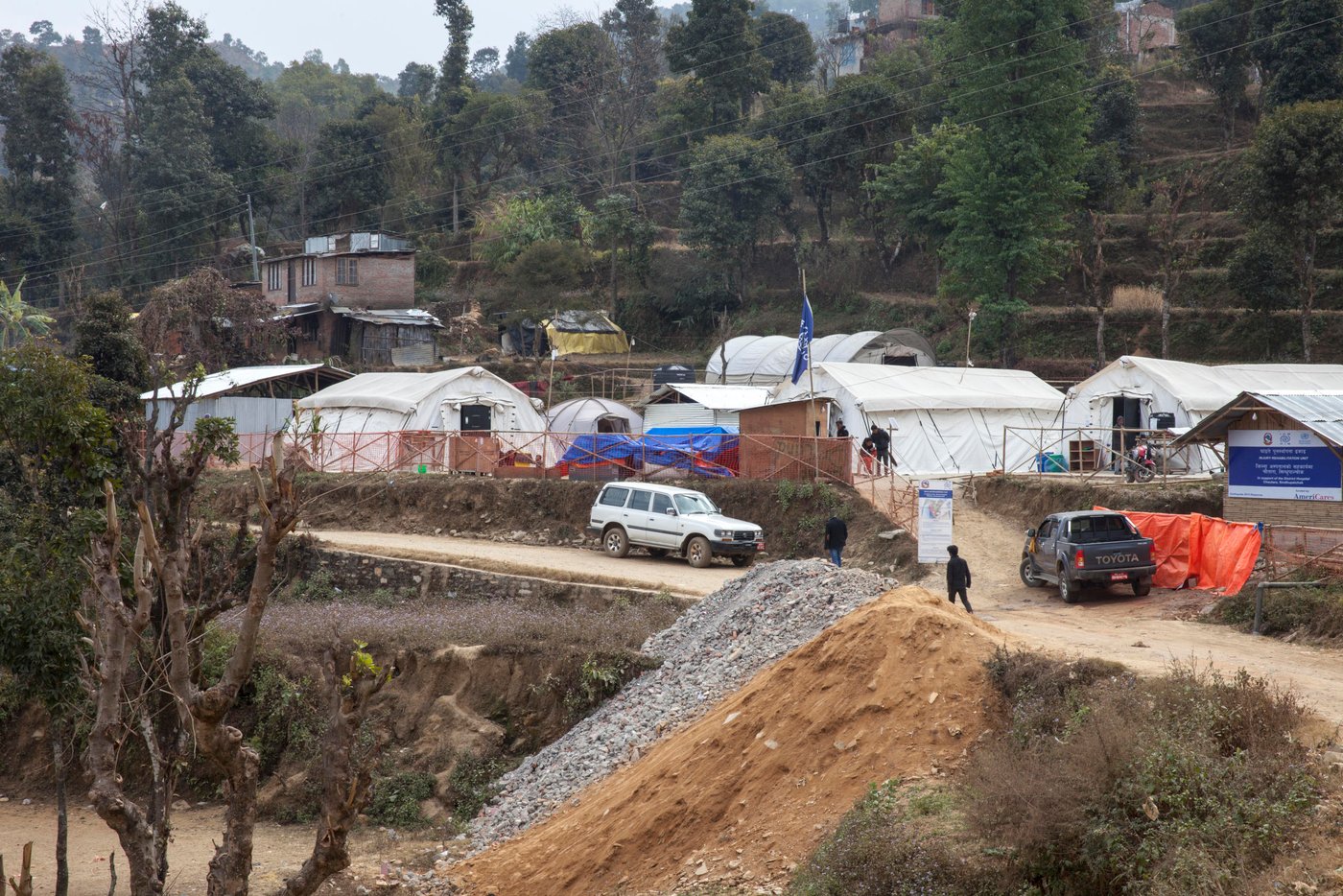
Hit on the head
12-year-old Yangmo was minding the family's cattle in the field when the ground started shaking violently in last year's earthquake. A rock fell from one of the hills and hit her on the back of the head.
Because their village is very remote, it took Yangmo's father five days to get her to hospital in the district capital of Chautara. From there, she was helicoptered to another hospital in Kathmandu.
"There the foreign doctors operated her. How many injections did they give you? 12 injections", her father, Bahadur Tamang says, looking at his youngest daughter.
Yangmo herself doesn't remember much from this time, and still struggles with her memory. After the accident she didn't talk for five days, and it took equally long for her to recognise people around her.
"The doctors told me to bring her back for a follow-up after three months, but because of everything that had happened, I didn't manage to go back until after six months", Bahadur explains.
Couldn't go to school
In the meantime, Yangmo was not able to walk and had to be carried everywhere.
"The first couple of days they carried me to school, but then I had to stay home because I couldn't walk. When I came home, I felt like crying. My friends would play a lot, but I couldn't play with them", she says.
After the six month follow-up, Yangmo was referred to the IRU for physiotherapy. She has made a lot of progress and is now able to walk on her own. In addition to doing the exercises, Yangmo and the other children also receive some education.
"I didn't learn English at the village school, but here they teach me English as well as the Nepali alphabet. Both big and small letters", Yangmo says with a smile.
She is happy about her progress and her ability to continue her education.
"When I get back to my village, I will study. Because of my head injury I can't carry heavy loads, but I will read a lot of books and work in the kitchen", she concludes.
